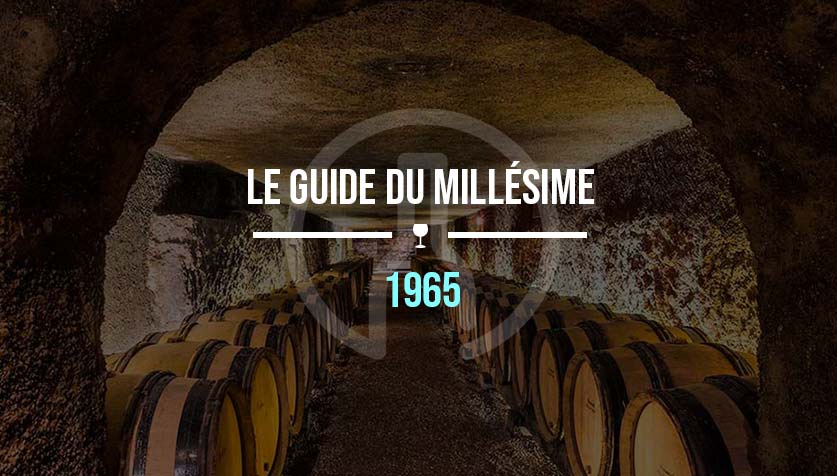Is 1965 a vintage close to your heart? Is it a year of birth, a year of marriage or some other symbol that makes you want to offer or drink a wine from that year? Let us decipher this vintage for you, to help you buy the bottle that best suits your needs.
-
Vintage 1965 in BORDEAUX
It's hard to go into detail about 1965. It was surely the least successful vintage, the worst of the post-war period. It has to be said that the almost constant rainfall in the vineyards had something to do with it. It was the year of complete grape rot. This resulted in diluted wines that were complicated to vinify. And even if the year was less disastrous than 1963, no wine from this vintage is good enough to drink anymore.
Anthony Barton used to say "rainy summers and sad years", and the years 1963, 1965 and 1968 stand out as records for bad vintages.
-
Vintage 1965 in BOURGOGNE
It's the same story for Burgundy wines. The 1965 vintage will not be remembered as a great year for winemaking and tasting. It was a sad year, quite simply because there wasn't a single day in June, July and August when not a drop fell on the Burgundian soil. The harvest was delayed until mid-October, but the weather never warmed up enough to ripen the grapes properly. Some winemakers will have uses chaptalization (the addition of sugar to improve the concentration and alcohol content of the wine), but this is not enough to produce decent wines. As a rule, the wines are dull, pale and lack richness and depth.
-
Vintage 1965 in the rest of France
Rain poured down across France in June, July and August. This delayed the ripening of the grapes, and above all allowed humidity to settle in the vines. In addition to all these constraints, there is also the risk of rotting on the grapes.
In the Rhône Valley, it was a disastrous year. Diluted wines, with no power and very little ageing potential.
In the Champagne region, Mother Nature had a tough time of it: in addition to all these difficulties, hailstorms hit the vines. Some of the grapes were destroyed by the hail, while the surviving grapes were characterized by excessive acidity and insufficient alcohol.
In the end, the only good news is once again for the Alsace vineyards, which even though conditions were also complicated, brought in grapes of better quality and succeeded in the 1963 vintage in terms of both quantity and quality.





![✨ Comptoir des Millésimes honors Champagne's great winemakers ✨[LINK TO THE ORGANIC CELLAR]We've selected 11 exceptional estates that reveal the full richness of Champagne terroir through unique, refined cuvées. Hugues Godmé - In Verzenay, this family-run biodynamic estate offers precise, vibrant champagnes with a beautiful mineral tension.Egly-Ouriet - A benchmark for the Montagne de Reims, its powerful champagnes, aged for long periods in barrel, impress with their complexity.Moussé Fils - In Cuisles, the Meunier grape is king. Pertois-Moriset - Pure, taut Chardonnay Grands Crus for lovers of chalky finesse. A fine address in Mesnil-sur-Oger.Geoffroy - In Aÿ, this domaine produces fine champagnes, carefully crafted and barrel-aged to reveal the full complexity of the terroir.Larmandier-Bernier - Biodynamic viticulture, exceptional parcels and purity. Crystal-clear, intense champagnes for connoisseurs.Roger Coulon - Eight generations of expertise at Vrigny. Balanced, subtle and elegant champagnes.A. Bergère - In Avize, a dynamic house offering expressive, fruity and accessible cuvées.Adrien Renoir - A promising talent from Verzy, he produces fine, complex champagnes with a true sense of terroir.De Sousa - Emblematic house in Avize. Richness, depth, long ageing: Chardonnay at its peak.Pierre Paillard - In Bouzy, the family magnifies Pinot Noir with vinous, racy and sincere cuvées.📦 Order now on our website#ComptoirdesMillésimes #Champagne #VigneronsIndépendants #GrandVin #ChampagnesdeTerroir #LivraisonRapide](https://www.comptoirdesmillesimes.com/blog/wp-content/plugins/instagram-feed/img/placeholder.png)